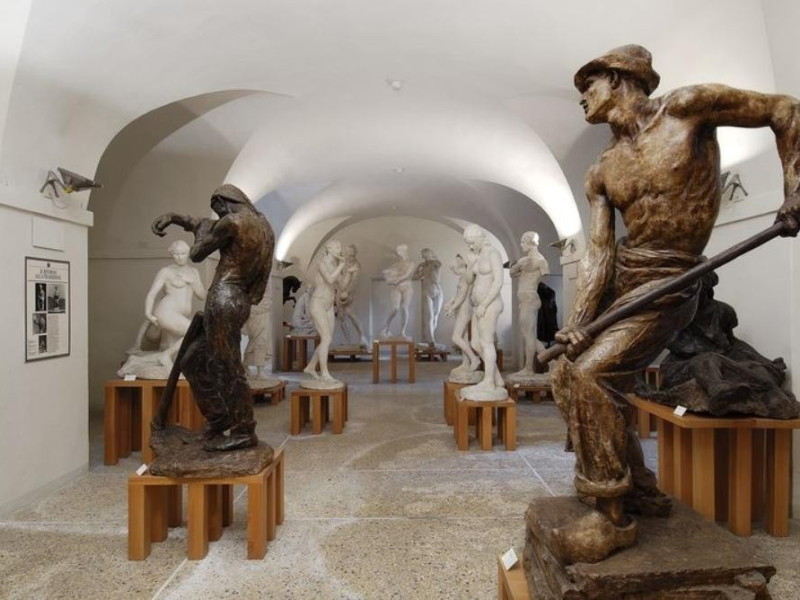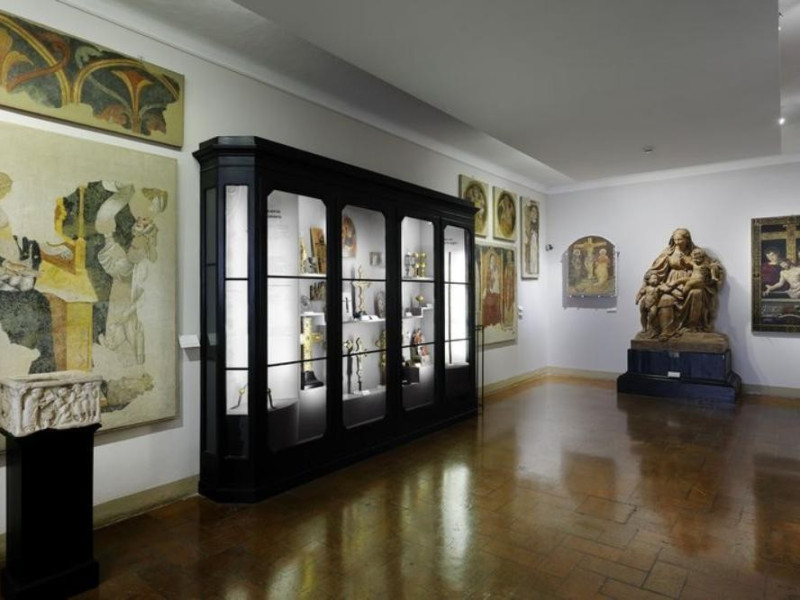Museo civico d'arte di Modena
The Civic Museum of Art was founded in 1962 by the division of the Civic Museum - established in 1871 - in two areas: the archaeological-ethnological, and the historical-artistic. Founded after the Unification of Italy, the institute draws its primary vocation being place for the preservation of the "homelands memories" and affirmation of citizenship, and it is in this light that acquires its full meaning the rich of collections that characterizes it. It's a vast and varied heritage including: paintings, sculptures, ceramics, glass, musical instruments, scientific instruments, decorated papers, textiles etc. attributable largely to the figurative culture and craft production. Many testimonies come from the donation of important private collections or gifts from sporadic to which are added, over time, acquisitions and recoveries that contribute significantly to documenting the history and culture of the area. The exhibition unfolds in a series of rooms that have maintained the structure received at the beginning of the twentieth century and characterized by large windows. Among the items, of greater significance emerge the textile collection, donated by Count Luigi Alberto Gandini, consisting of over two thousand fragments of fabrics, laces, ribbons and embroidery dating from the twelfth to the nineteenth century, and the Galleria Campori, donated to the city of Modena in 1929, which include paintings by Lana, Ferrari, Ceruti, Joli, Manfredi, Regnier, Crespi, String and Cerano. The hall of sacred welcomes the great "Madonna di Piazza" by Begarelli, fragments of frescoes of the XIII-XIV ripped from the Duomo, sculptures and liturgical furnishings of the XII-XV, and several paintings by Modena of the XVI-XVIII, between which string, Caula, Consetti and Zoboli, from the territory. Mention should also be the collection of scientific instruments, which was sold by the Cabinet of Physics and full of equipment built in the workshop of the university, to musical instruments, donated by Luigi Francesco Valdrighi - which highlights the Peter Termanini's harpsichord (1741) and the Antonio Apparuti's brass of (first half of the nineteenth century) - and that of weapons, the result of the donation of Paul Coccapani Imperiali. Other collections are dedicated to the molds, ceramics, with Emilian graffiti nd exemplary production from XIII-XIX centuries, to glass, decorated papers documenting the various techniques, the leather embossed and gilded, with architectural terracotta retrieved from the territory, the weights and measures Modena, signets and stamps. The figurative Modena nineteenth to the early twentieth century is represented by works of Malatesta, Muzzioli, Hats, Cavazza, Bellei, Valli and other artists formed the Academy of Fine Arts currently exposed, for lack of space, in the rooms of the Palazzo Comunale. The rich man also belongs to the Museum Fund Giuseppe Graziosi (Savignano sul Panaro, Florence 1879 1942). The successful career of the artist is documented by pottery, original plasters, bronzes, paintings and a graphic - including drawings, etchings and lithographs - Gypsotheque exposed in the ground floor of the Palace Museum, and while the photo archive donated by heirs between 1975 and 1999 is available via the Internet site of the Museum.




